
Libya is the fourth largest country in Africa and the sixteenth largest country in the world. It is on the Mediterranean with Egypt to the east, Tunisia to the northwest, Algeria to the west, Niger and Chad to the south, and Sudan to the southeast. Although the oil discoveries of the 1960s have brought immense wealth, at the time of its independence it was an extremely poor desert state whose only important physical asset appeared to be its strategic location at the midpoint of Africa's northern rim.

North Africa is a region encompassing the northern portion of the African continent. There is no singularly accepted scope for the region, and it is sometimes defined as stretching from the Atlantic shores of the Western Sahara in the west, to Egypt and Sudan's Red Sea coast in the east.

Western Sahara is a disputed territory in North-western Africa. It has a surface area of 272,000 square kilometres (105,000 sq mi). Approximately 30% of the territory is controlled by the Sahrawi Arab Democratic Republic (SADR); the remaining 70% is occupied and administered by neighboring Morocco. It is the most sparsely populated territory in Africa and the second most sparsely populated territory in the world, mainly consisting of desert flatlands. The population is estimated at 618,600. Nearly 40% of that population lives in Morocco-controlled Laayoune, the largest city of Western Sahara.

The Bedouin, Beduin, or Bedu are pastorally nomadic Arab tribes who have historically inhabited the desert regions in the Arabian Peninsula, North Africa, the Levant, and Mesopotamia (Iraq). The Bedouin originated in the Syrian Desert and Arabian Desert but spread across the rest of the Arab world in West Asia and North Africa after the spread of Islam. The English word bedouin comes from the Arabic badawī, which means "desert-dweller", and is traditionally contrasted with ḥāḍir, the term for sedentary people. Bedouin territory stretches from the vast deserts of North Africa to the rocky ones of the Middle East. They are sometimes traditionally divided into tribes, or clans, and historically share a common culture of herding camels, sheep and goats. The vast majority of Bedouins adhere to Islam, although there are some fewer numbers of Christian Bedouins present in the Fertile Crescent.
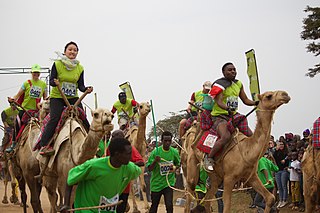
Camel racing is a racing sport in which jockeys riding on camels compete against each other to finish a set number of laps around a circular racetrack. It is most popular in Western Asia, North Africa, the Horn of Africa, Pakistan, Mongolia and Australia. Professional camel racing, like horse racing, is an event for betting and tourism. Camels can run at speeds up to 65 km/h in short sprints and they can maintain a speed of 40 km/h for an hour. Camels are often controlled by child jockeys, but allegations of human rights abuses have led to nationwide bans on underage labor in the UAE and Qatar. In modern camel racing, camels are often controlled by remote controlled robotic whips.

The Sahara is a desert spanning across North Africa. With an area of 9,200,000 square kilometres (3,600,000 sq mi), it is the largest hot desert in the world and the third-largest desert overall, smaller only than the deserts of Antarctica and the northern Arctic.

The Maghreb, also known as the Arab Maghreb and Northwest Africa, is the western part of the Arab world. The region comprises western and central North Africa, including Algeria, Libya, Mauritania, Morocco, and Tunisia. The Maghreb also includes the disputed territory of Western Sahara. As of 2018, the region had a population of over 100 million people.

Douz is a town in the Kebili Governorate in the south of Tunisia, known as the "gateway to the Sahara." By road it is located 31 kilometres (19 mi) southwest of Blidet, 125 kilometres (78 mi) southeast of Tozeur, and 475 kilometres (295 mi) south of the Tunisian capital of Tunis.

The Pushkar Fair, also called the Pushkar Camel Fair or locally as Kartik Mela or Pushkar ka Mela is an annual multi-day livestock fair and cultural fête held in the town of Pushkar near Ajmer city in Ajmer district in. The fair starts with the Hindu calendar month of Kartik and ends on the Kartik Purnima, which typically overlaps with late October and early November in the Gregorian calendar. In 1998, over 1 million visitors came to Pushkar throughout the year. The Pushkar fair alone attracts over 200,000 visitors.

Sahara with Michael Palin is a four-part BBC television series presented by British comedian and travel presenter Michael Palin, and first broadcast in 2002. In it, Palin travelled around the Sahara in Northern and Western Africa, meeting people and visiting places. The journey route included the following countries and territories: Gibraltar, Morocco, Western Sahara, Mauritania, Senegal, Mali, Niger, Libya, Tunisia, Algeria and Ceuta, Spain.
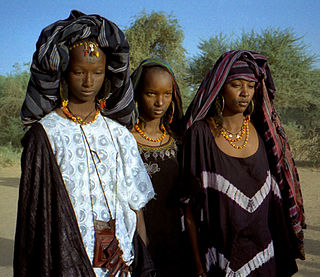
The Wodaabe is a name that is used to designate a subgroup of the Fula ethnic group who are traditionally nomadic found primarily in Niger and Chad. All Wodaabe people should not be mistaken as Mbororo as these are two separate subgroups of the Fulani people. It is translated into English as "Cattle Fulani", and meaning "those who dwell in cattle camps". The Wodaabe culture is one of the 186 cultures of the standard cross-cultural sample used by anthropologists to compare cultural traits. A Wodaabe woman, Hindou Oumarou Ibrahim, was also chosen to represent civil society of the world on the signing of Paris Protocol on 22 April 2016.
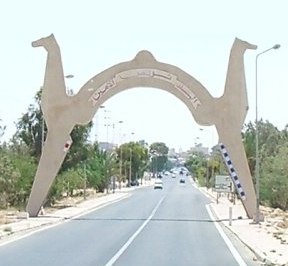
Kebili is a town in the south of Tunisia and one of the main cities in the Nefzaoua region. It is located in southern Tunisia near the Chott el Djerid salt lake. It is the capital of the Kebili Governorate.

The culture of North Africa encompasses the customs and traditions of art, architecture, music, literature, lifestyle, philosophy, food, politics and religion that have been practiced and maintained by the numerous ethnic groups of North Africa. North Africa encompasses the northern portion of Africa, including a large portion of the Sahara Desert. The region's commonly defined boundaries include Algeria, Egypt, Libya, Morocco, Tunisia, and Western Sahara, stretching from the Atlantic shores of the Western Sahara in the west, to Egypt's Red Sea coast in the east. The United Nations' definition additionally includes Sudan in the region. The inhabitants of North Africa are roughly divided in a manner corresponding to the principal geographic regions of North Africa: the Maghreb, the Nile valley, and the Sahel.

Chott el Djerid also spelled Sciott Gerid and Shott el Jerid, is a chott, a large endorheic salt lake in southern Tunisia. The name can be translated from the Arabic into English as "Lagoon of the Land of Palms".
The Trans-Saharan Counterterrorism Partnership (TSCTP) is an interagency plan by the United States government, combining efforts by both civil and military agencies, "to combat terrorism in Trans-Saharan Africa. The military component of TSCTI comprises the U.S. efforts of Operation Enduring Freedom - Trans Sahara. The goal of TSCTI is to counter terrorist influences in the region and assist governments to better control their territory and to prevent huge tracts of largely deserted African territory from becoming a safe haven for terrorist groups." The first partner nations in the program included Algeria, Chad, Mali, Mauritania, Morocco, Niger, Senegal, Nigeria and Tunisia. Current membership includes eleven African countries: Algeria, Burkina Faso, Libya, Morocco, Tunisia, Chad, Mali, Mauritania, Niger, Nigeria, and Senegal. The goal of the alliance is not to fight in hot spots, but to provide preventive training and engagement with governments to help prevent the growth of terrorist organizations in the partner countries. Exercise Flintlock 2005, a joint military exercise first held in June 2005, was the first result of the new program.
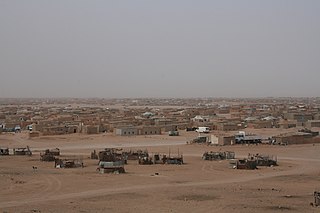
The Sahrawi refugee camps, also known as the Tindouf camps, are a collection of refugee camps set up in the Tindouf Province, Algeria, in 1975–76 for Sahrawi refugees fleeing from Moroccan forces, who advanced through Western Sahara during the Western Sahara War. With most of the original refugees still living in the camps, the situation is among the most protracted in the world.

The Sahara International Film Festival, also known as FiSahara, is an annual event which takes place in the Sahrawi refugee camps, at the southwest corner of Algeria, near the border with Western Sahara. It is the only film festival in the world held in a refugee camp. The first festival was in large part organised by Peruvian film director Javier Corcuera.
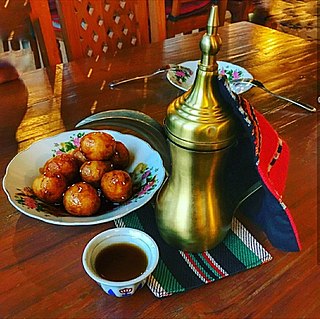
Emirati cuisine is the local traditional Arabic cuisine of the United Arab Emirates.The origins of Emirati cuisine come from the Bedouins who roamed the country. It is part of Eastern Arabian cuisine and shares similarities with cuisines from neighboring countries, such as Omani cuisine and Saudi Arabian cuisine, as well as influences from different Middle Eastern and Asian cuisines.

The Guérewol is an annual courtship ritual competition among the Wodaabe Fula people of Niger. Young men dressed in elaborate ornamentation and made up in traditional face painting gather in lines to dance and sing, vying for the attentions of marriageable young women. The Guérewol occurs each year as the traditionally nomadic Wodaabe cattle herders gather at the southern edge of the Sahara before dispersing south on their dry season pastures.

Gustave Achille Guillaumet was a French painter. He is best known for his paintings of North Africa.


















